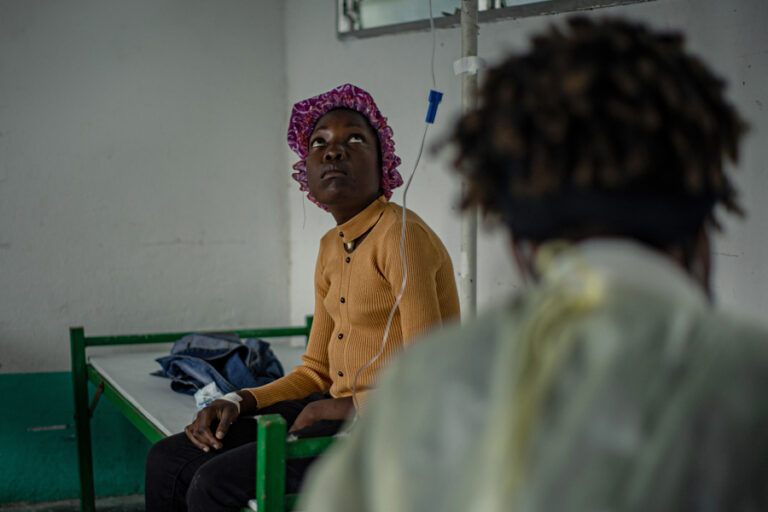
Cholera threatens Haiti again after surge in cases
Santo Domingo/Port-au-Prince, (EFE).
Haiti is facing a new cholera outbreak, with 17 confirmed deaths since the second week of September. The number could rise amid poor sanitary conditions and expected rainfall, as the country remains extremely vulnerable, with 1.4 million people internally displaced by the violence of armed gangs.

Several municipalities in the Ouest department, including Pétion-Ville, located in the hills above Port-au-Prince, have been reporting a resurgence of cholera cases since last month.
In the past two years, infections had dropped significantly following the outbreak declared in Oct. 2022, which killed more than 700 people.
Haiti’s first cholera epidemic began in Oct. 2010, infecting more than 820,000 people and killing around 10,000.

The outbreak was traced to human waste dumped into a river by UN peacekeepers from the MINUSTAH mission.
Health threat amid chaos
The Haitian Ministry of Public Health and Population (MSPP) confirmed last week that 47 people have died of cholera so far this year.
More than 1.4 million Haitians have been forced to flee their homes until 2025, the highest number ever recorded in the Caribbean nation, which has been mired in deep political and humanitarian crises for years.

However, since September, there has been a “very significant” rise in both suspected and confirmed cholera cases compared to 2024, said Dr. Oscar Martin Barreneche, the Pan American Health Organization/World Health Organization (PAHO/WHO) representative in Haiti, in a phone interview with EFE.
This spike followed a period of 10 to 11 weeks without any confirmed cases of the disease, an acute diarrheal infection caused by the Vibrio cholerae bacterium, typically transmitted through contaminated food or water.
Since mid-September, authorities have reported 272 suspected cases, 42 confirmed, and 17 deaths, 11 of them in health facilities.

“There is a particular vulnerability right now that could allow the outbreak to grow significantly,” Barreneche warned.
Among the causes, he cited the circulation of the cholera bacterium, seasonal rains, and poor sanitation in camps for displaced people, though no cases have yet been confirmed in those sites.
Pétion-Ville, considered one of the few relatively safe areas in the capital, also faces increased population pressure as people flee neighborhoods controlled, about 90 % by heavily armed gangs.

Limited capacity to treat patients
EFE visited two health centers, one in Pèlerin and another in Thomassin 25, both located in Pétion-Ville.
Several patients arrived with symptoms consistent with cholera, but after receiving basic medication, they were sent home because the clinics lacked the capacity to handle such cases.
In this commune, most residents do not have access to sanitation services, forcing many to defecate in the river, the same water source used for drinking and washing clothes.

After the first cases were reported in Pétion-Ville, the Public Health Ministry announced an emergency action plan that includes installing chlorinated water points in public facilities and service institutions.
Dr. Barreneche acknowledged that there are currently no specialized cholera treatment centers in the area, forcing patients to be referred to Cité Soleil, a dangerous neighborhood in northern Port-au-Prince controlled by gangs.
He said authorities are considering setting up treatment and case-management centers in Pétion-Ville “so that people don’t have to travel or be referred so far away.”

Meanwhile, local authorities and international organizations have “aligned under the leadership of the Ministry of Health to take the necessary actions across different pillars” to stop the outbreak, Barreneche added.




